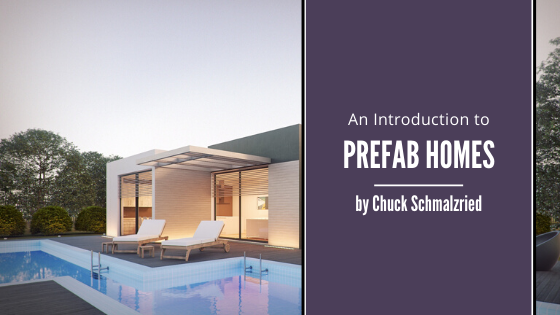When we think of custom homes, we typically don’t think about prefab homes. “Prefab,” short for prefabricated encompasses a category of homes that are built offsite, usually in a factory, and then transported to the location. Prefab construction is not a new concept and has been around for decades: in fact, Sears used to offer prefab homes that you could order through their catalog! Manufacturers who build prefab homes claim that their homes are more sustainable, more affordable, and quicker to build than traditional homes.
There are a variety of different prefab homes that you can buy. The term prefab refers to the process of construction, not a single style. Manufactured homes are completely constructed off-site before delivery. Modular homes are another type of prefabricated construction, where components are made off-site and then the modules are transferred to a plot of land for final installation. Each module is a complete unit that includes the basics like plumbing, electrical, doors, and closets. Multiple modules are then connected to form a larger house.
Yet still, there are panelized homes and kit homes. These are similar to modular homes, but rather than being whole modules, they are panels and walls that are then transferred to the building site. These require more interior finishing work, so the build time is longer. Kit homes are akin to an Ikea bookshelf, just much larger. The parts are cut out in a factory and then shipped with building instructions to the site for construction.
A prefab home can cost less than a traditional custom home by an average of 10 to 25 percent. Being mass-produced on an assembly line reduces costs because factories buy their supplies in bulk. There is also a reduction in the cost of labor because you don’t have to send contractors like carpenters, plumbers, and others to the individual construction sites. Plus, a faster build also saves money. There are other costs associated with a prefab home that aren’t included in the sticker price, such as securing land for building, soil testing, permits, and utility hookups.
Prefabricated homes are a great option for those who want a custom home but are concerned about their ecological footprint. The prefab construction process produces less waste in the factories, and the companies are more likely to reuse their waste materials. Factory-built homes tend to have tighter seams, which makes heating and cooling more efficient. Some prefab companies even specialize in sustainable design, incorporating energy-efficient appliances and sustainable materials like bamboo flooring.


